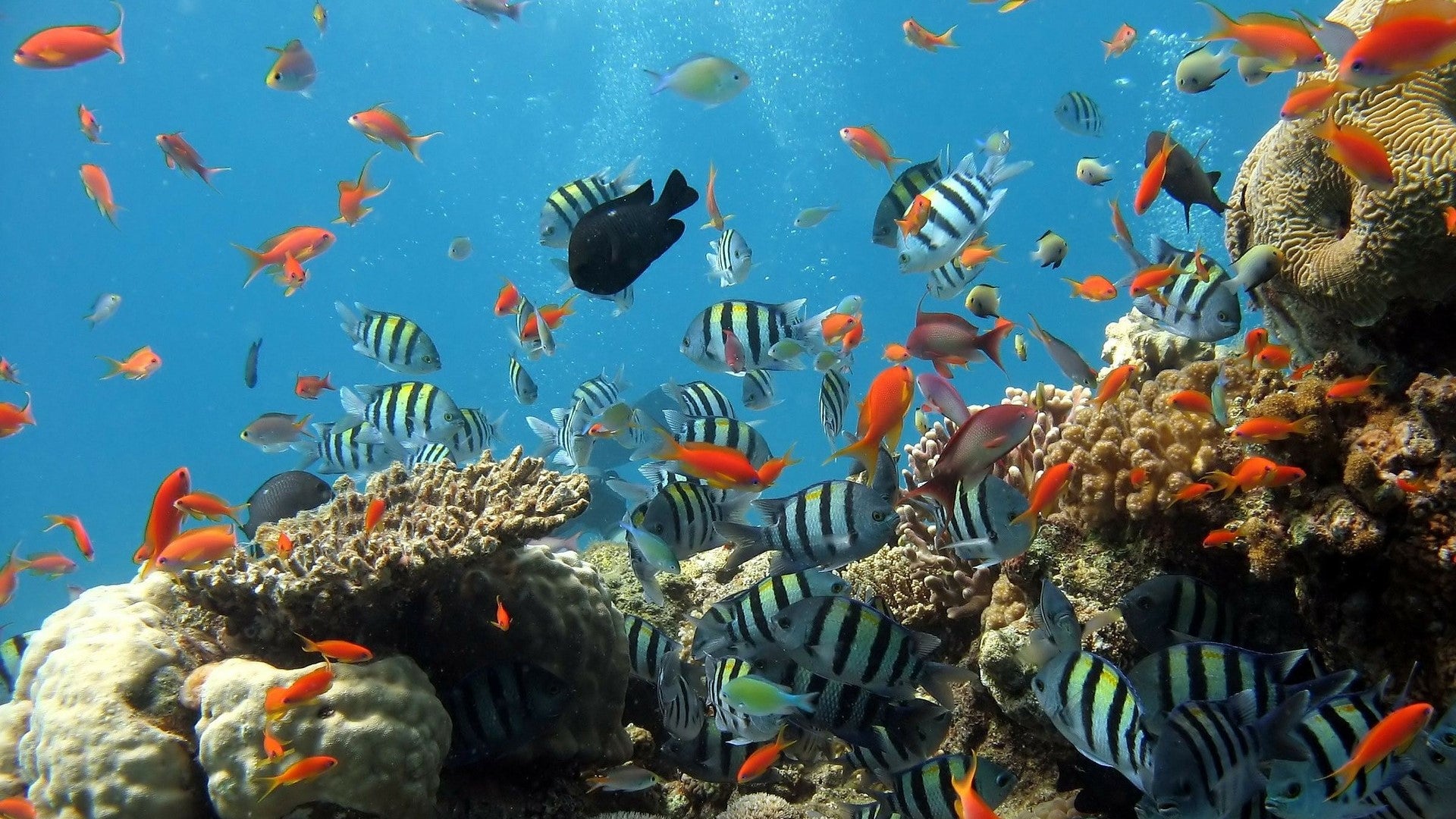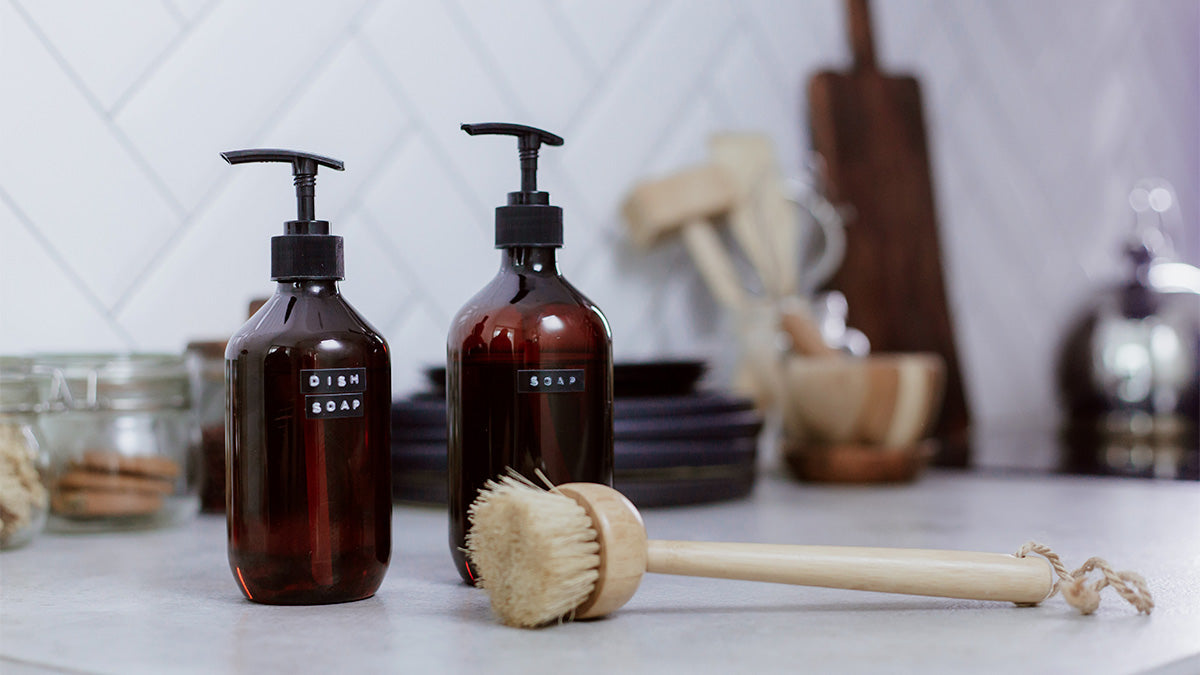
Everything you need to know about sustainable sunscreen
The sun is starting to shine more and more often, so it's time to start applying sunscreen. Too much exposure of the skin to the sun increases the risk of skin cancer and makes your skin age faster. It is therefore important to apply sunscreen every day, even on cloudy days! Afraid that you won't get a tan if you apply a lot? Fortunately, you don't have to, sunscreen ensures that UV radiation is less harmful, but not that you get less tan. So you get a nice tan, but you don't burn and so you get a nicer and longer tan!
But what do you put on? Is sunscreen as good for you (and the environment) as you think? In this article, we look at the harmful ingredients in conventional sunscreens and possible sustainable alternatives.
How does sunscreen work?
Sunlight contains UV radiation. This UV radiation penetrates our skin and causes damage there. A sunscreen must therefore ensure that UV radiation cannot reach the skin. That is why sunscreens contain UV filters that absorb or reflect UV radiation. There are two types of filters. Chemical filters absorb UV radiation and convert it into heat and less harmful radiation and mineral filters reflect sunlight and ensure that the radiation does not reach the skin.
Why is conventional sunscreen bad?
Bad for you…
Many conventional sunscreens contain chemicals, and that doesn’t sound nice. Recent studies show that the body absorbs these chemicals in much higher quantities than previously thought. Detectable amounts have even been found in human urine and breast milk. There are concerns that these chemicals can affect hormone levels, but at this point it’s unclear whether the chemicals actually pose any risks to our health. Still, it’s not a pleasant thought, and if you don’t want to take any chances, here are the ingredients to watch out for:
- Oxybenzone
- Octinoxate
- Octocrylene
- Homosalate
- Octisalate
- Avobenzone
- Nanoparticles
…and bad for the coral
If the fact that oxybenzone and other chemicals are bad for your health isn’t reason enough to make the switch, this is: oxybenzone is harmful to coral. When you swim with sunscreen on your body, chemicals are released into the water that are absorbed by the coral. Oxybenzone (even in very low concentrations) disrupts the coral’s reproductive and growth cycle, leading to coral bleaching (the breakdown of the coral’s immune system, leaving a white “coral skeleton”).
Coral reefs around the world are threatened by pollution, with popular destinations such as the Great Barrier Reef and the coast of Hawaii being the most vulnerable. These impressive ecosystems, with their beautiful colours and the many species that make the coral their home, attract visitors from all over the world. Coral reefs are crucial for biodiversity and for protecting coastlines. They also absorb carbon dioxide and are an important source of income for fishermen and tourism-dependent economies.
However, research by UNEP and others shows that coral reefs are resilient and can recover if we protect the marine environment and create the right conditions. Humans are responsible for the damage to coral reefs, but they can also be the solution.One of the steps we can take to help restore the beautiful coral reefs is to use coral-friendly sunscreens.

An alternative: mineral sunscreens
Although researchers are still investigating whether sunscreen is harmful to our health, we know for sure that the sun is and so we need an alternative to chemical sunscreens. And luckily there is one! The minerals titanium dioxide and zinc oxide protect your skin by physically blocking and reflecting UV radiation. Mineral filters are therefore also called physical sun filters. Titanium and zinc are natural minerals that are safe for humans and the environment as long as they do not contain nano particles.
Titanium dioxide and zinc oxide are small particles that sit on your skin and reflect the sun. This can cause a white glow to be visible on the skin. To prevent this, very small particles have been used since the 1990s, sometimes 1000 times smaller than a human hair. We call these nanoparticles. When the particles are this small, they can be absorbed by the skin, just like the chemicals. It is also not yet known what this does to our health for these mineral filters, but more and more research shows that these natural ingredients are also harmful to the coral.
This also means that not all sunscreens without chemical filters, that are labeled as ‘natural’, ‘mineral filter’ or ‘coral friendly’ are actually that. It is up to us not to be fooled by misleading labels and to look at the ingredients ourselves. Take the list we mentioned above with you to the store and make sure that these ingredients are not in your sunscreen. Basically, if the protective ingredient in the sunscreen is anything other than non-nano titanium dioxide or non-nano zinc oxide, keep looking!

The best mineral sunscreen
Fortunately, there are more and more good mineral sunscreens without junk to be found. The search for a natural sunscreen that suits you is very personal. It is not unusual to have to try different creams before you find one that suits you.
We are totally fans of the brand OdyskinIn our opinion, this is the best non-nano mineral sunscreen that does not leave a white cast. Odyskin sunscreen is available in SPF 30 and SPF 50, contains no harmful ingredients, smells wonderful and spreads easily. In addition, the sunscreen is COSMOS certified, vegan, not tested on animals, palm oil free and packaged in a recyclable aluminum tube. All other sunscreens on our website are free of chemicals and nano particles.
Pro tip: don't leave your natural sunscreen in direct sunlight. This can cause it to liquefy.



Leave a comment
This site is protected by hCaptcha and the hCaptcha Privacy Policy and Terms of Service apply.